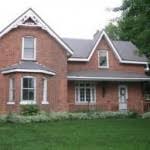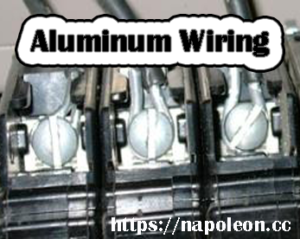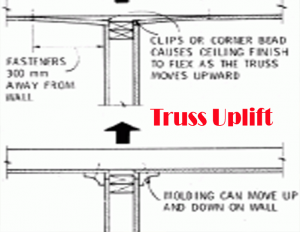Inspecting Older Homes in Orillia

When Inspecting Older Homes in Orillia we would like to make you aware of some of the issues you may encounter. The Orillia Home Inspector offers the following tips which can alert you to some of the pit falls involved prior to purchasing a home.
Mice in the attic, jury rigged plumbing, cut rafters and mould growing in the house are just some of the items we have found inspecting older homes. Buyers of older homes are typically either people who know older homes and what to expect, or people who think living in an older home is quaint and have no idea of what is involved in buying or maintaining an older home. In this article the Orillia Home Inspector will address some of the issues encountered in older homes during the home inspection.
Asbestos can be a very expensive product to have removed from your house so it is important to identify its presence prior to purchase. Asbestos can be found wrapped around older plumbing and heating ducts, in drywall, floor tiles and in your attic insulation. The Ontario Government has very strict rules and guidelines on removing and disposing of asbestos, which is typically a Class 2 hazard and requires very specific methods for control and containment of asbestos fibers.
Galvanized plumbing is sometimes still found in use in older homes. Most insurance companies will not insure a home with galvanized plumbing as it is normally long past its expected life expectancy. In older homes many home owners will have had most of the exposed galvanized plumbing removed but many times the hard to reach pipes are left in place.
Knob and Tube wiring is dated from the early 1880’s to the 1930 era. This type of wiring is easily recognized by its railway track style layout and porcelain insulators. Again many insurance companies will not insure homes with knob and tube wiring or homes with less than a 100 amp main service panel. Again many home owners have the majority of their homes wiring updated but leave hard to reach areas intact which can lead to an surprise expense for unwary homebuyers.
Insects, Raccoons, Rodents and Bats can cause havoc in homes, especially in your attic. Animal feces can be toxic and require specialized equipment to be used during removal from your home. Some bylaws control how you have to deal with removal of protected bat species or raccoons. Identifying the presence of any of these problems can greatly affect your negotiations when purchasing your home.
Aluminum wiring was used for a short period as a replacement material when the price of copper rose in the 60’s and 70’s. The main problem found with aluminum wiring was the corrosion that developed between dissimilar metal

Older windows and doors can be very expensive to replace in older homes as they are typically a custom order to fit existing openings. Lead paint is typically present in any pre 1970’s home and special precautions should be made not to contaminate furniture and HVAC systems during removal or older windows and doors. Maintaining older windows can also be a very expensive project, painting and replacing glazing alone is very time and labour intensive.
Insulation is older homes is sometimes very minimal and except for your attic, not very accessible. Many century homes have newspaper, cardboard, sawdust and horse hair used as an insulating product. Unless someone else has previously replace your insulation in exterior walls there is probably very little insulation installed. Removing interior wall finishes can be very labour intensive and you also have to consider the leak paint and asbestos products that may have been used. Many older neighbourhoods are now being subjected to Asbestos abatement prior to completing home sale as the costs can be astronomical and sometimes beyond the financial reach of a home buyer.
Inspecting your homes structure is very important has any damage or defects can affect your homes stability and any issues will require repair ASAP. Older rock and cement foundations can be crumbling or showing signs of movement or shifting, which will require reinforcing foundations to be added. Removal of supporting walls may have caused settling of buildings with floors sagging or otherwise dropping where supports were removed. Century style homes were not built with building permits and the quality of the homes structure depended on the knowledge and expertise of the builder.
When buying any home the buyers best protection is too educate themselves prior to shopping for a home so that they can make an educated choice based on facts rather than curb appeal.
Remember Caveat Emptor – Buyer Beware is basically the only protection you have once you agree to purchase a home.
Century Home Inspections
Oil Tanks and Your Home Inspection
Common Problems Found During Home Inspections
Buying a Home vs Renting
Inspection Areas
Alliston
Angus
Barrie
Innisfil
Orillia
Midland
Penetanguishene
Newmarket
Wasaga Beach
Certifications















